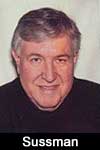Barry Sussman: National Security and Afghanistan
Posted at 5:53 pm, September 6th, 2009
The press could do better at putting Obama administration actions and assertions on Afghanistan in context. I write this simply as an old newspaper editor, not an expert. The lead story in the New York Times on Sept. 4 is an example.
The first paragraph said Obama’s senior advisers are trying “to determine the proper size and mission of the American effort” in response to “the insurgency in Afghanistan.” Paragraph two says “administration officials have begun what one called a ‘a healthy debate’ about what the priorities should be.”
What has been our mission until now? We’re considering a change, are we? From what, to what?
Four paragraphs on down, Obama’s senior adviser David Axelrod states, “There is a unanimity of opinion about what our objective is, and the objective is to disable and destroy Al Qaeda and remove that threat to our national security.”
Axelrod used the magic words, “national security.” Or maybe he misused them. Americans would support fighting for our national security. What that has to do with Afghanistan is another question. Al Qaeda is in Pakistan, not Afghanistan. To nab Osama Bin Laden, American troops are in the wrong country.
It’s by no means clear that Al Qaeda would return to Afghanistan if American troops pulled out; quite the contrary. John Mueller of Ohio State, for example, wrote in Foreign Affairs that if the Taliban “came to power again now, they would be highly unlikely to host provocative terrorist groups whose actions could lead to another outside intervention.”
Al Qaeda aside, if one of the objectives is to undermine the Taliban, then Obama and his advisers need to be asked why that’s a national security issue, and why the American military is more likely to succeed than the Afghans themselves. And how long we are expected to stay.
Afghanistan has about 30 million people. A Council on Foreign Relations report, updated last month, refers to a 2007 estimate that there are “as many as ten thousand fighters, but a much smaller fraction—less than three thousand—are full-time insurgents.” That’s the most recent estimate of Taliban numbers I could find.
Would 100,000 or even 200,000 American and allied troops be better able than 30 million Afghans to subdue 3,000 or 10,000 Taliban fighters? Most likely not, if the majority of Afghans took the fight seriously. But suppose the answer is yes. Does that mean the U.S. is to stay on in Afghanistan with no end in sight, to block the Taliban from resuming power?
Again, writing as an editor, not an expert, it seems obvious that the press needs to ask and report on these kinds of questions.
There’s also the matter of corruption in Kabul. An election for president was held August 20. That’s almost three weeks ago, and the results aren’t in yet. How long does it take to count ballots; why so slow? And what about the widespread, documented instances of election fraud? Such as this one reported in the Sept. 7 New York Times.
An earlier Times piece, on Sept. 6, said Hamid Karzai, the current president, is inching toward the 50 percent level needed to win without a runoff. Maybe the reason for the slow vote count is that in some places it takes a while for votes to ripen.




